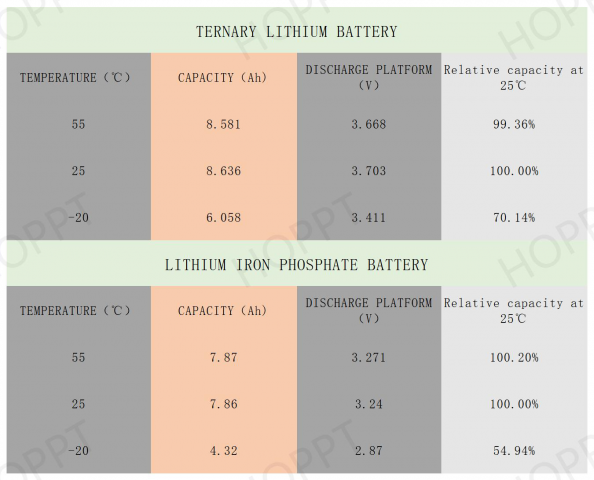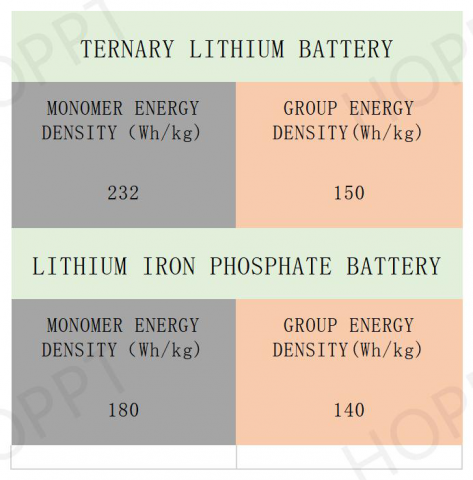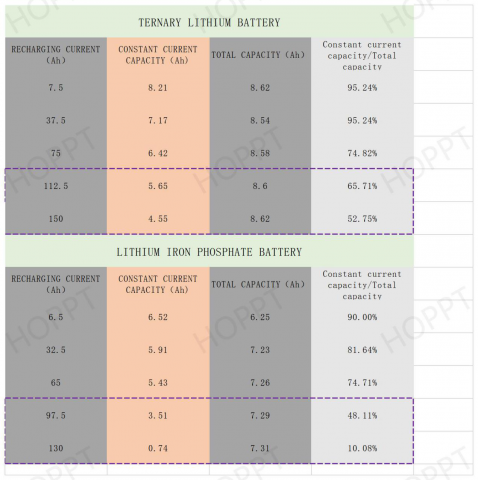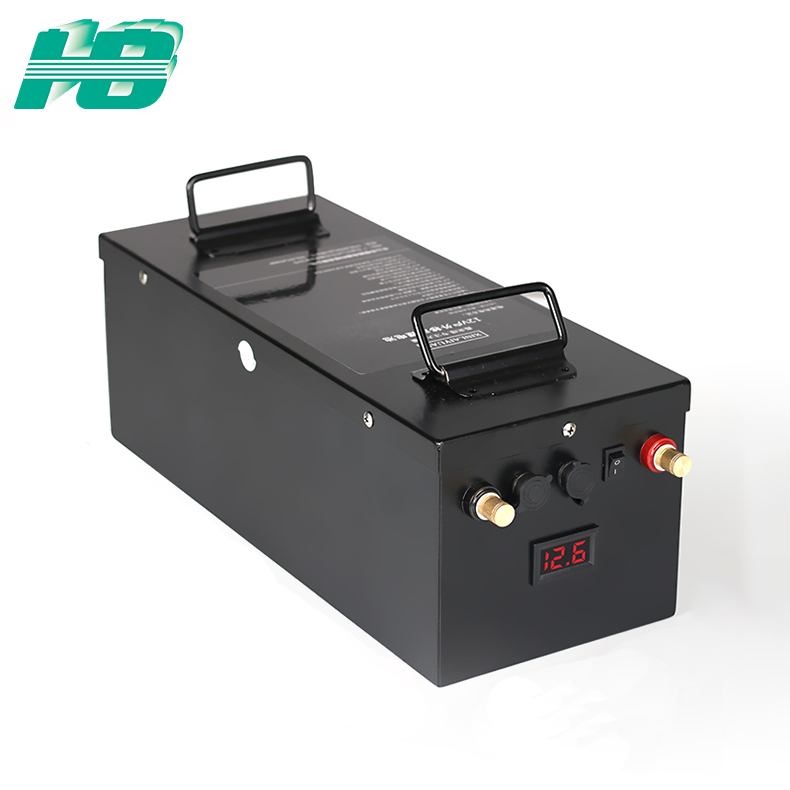What is the difference between ternary lithium and lithium iron phosphate batteries?
10th Mar, 2021 – With the increasing use of new energy vehicles, onboard lithium battery technology has received more attention. The lithium batteries on new energy vehicles are mainly lithium iron phosphate batteries represented by BYD and ternary lithium batteries represented by Tesla. So who is the leader in the new energy market?
This article will compare these two kinds of lithium batteries from five aspects. Of course, before that, we need to understand the principle of lithium batteries.
Lithium-ion batteries usually use carbon materials as the negative electrode and lithium-containing compounds as the positive electrode. There is a separator in the middle of the battery to avoid short-circuiting the positive and negative electrodes.
During charging and discharging, lithium ions go back and forth between the positive and negative electrodes. During charging, lithium ions are making deintercalation from the positive electrode and inserted into the negative electrode through the electrolyte; during discharge, lithium ions are precipitated from the sheet-structured carbon and recombine with the positive electrode compound Combine.
In the process of ion embedding and de-embedding, along with the embedding and de-embedding of equivalent electrons, a current is also generated.
The so-called lithium iron phosphate battery is a lithium-ion battery that only uses lithium iron phosphate as the cathode material. No precious metal elements characterize this type of battery.
In actual use, lithium iron phosphate batteries have the advantages of high-temperature resistance, strong safety and stability, low price, and better cycle performance. The ternary lithium battery refers to a lithium battery that uses lithium nickel cobalt manganate as the positive electrode material and graphite as the harmful electrode material. Unlike lithium iron phosphate, the ternary lithium battery has a high voltage platform, which means it is in the same volume. Or underweight, the specific energy of a ternary lithium battery is greater than the power.
In terms of the battery alone, there is no such thing as who is better or worse. It is just applied to actual use scenarios. There are different options according to other use conditions. Let’s compare the differences between the two batteries from several aspects.
4.2 v batteries
1. Safety aspect
In terms of safety, in the principle of lithium batteries, we talked about a separator in the middle of the lithium battery to prevent the positive and negative electrodes from being short-circuited. When a sharp object pierces the battery, the wall is also pierced, and the short-circuited of the positive and negative electrodes will cause the battery. It heats up and even explodes.
The blade battery successfully passed the acupuncture test, confirming the high safety of this lithium battery. Also, lithium iron phosphate cathode material’s thermal stability is much better than that of ternary lithium. It has exceptionally high strength within 500 degrees Celsius. Thermal runaway occurs when it exceeds 800 degrees Celsius. Even if thermal runaway occurs, the heat release of lithium iron phosphate battery is also prolonged. It will not release oxygen when it is decomposed, reducing the risk of fire.
In contrast, ternary lithium batteries begin to dissolve at around 300 degrees Celsius. In the spontaneous combustion of new energy vehicles, ternary lithium battery models take up a larger proportion.
2. Low-temperature discharge
If you are in Beijing, because the highest temperature in summer is around 40 degrees Celsius, and in winter, it is kept at about minus 16 degrees Celsius or even lower. Hence, such a temperature range is suitable for ternary lithium batteries with better low-temperature performance.
It can see it from the data that the two types of batteries are at minus 20 degrees Celsius, and the ternary lithium battery has obvious advantages compared with the lithium iron phosphate battery.

3. Energy density
According to the information provided by BAK Battery, a leading domestic ternary lithium battery company, the energy density of its 18650 cylindrical battery cell has reached 232Wh/kg. The energy density of the packaged battery pack is about 150Wh/kg, while the current domestic iron phosphate the energy density of a lithium battery cell is about 180Wh/kg.
However, BYD’s blade battery can arrange the cells in a sheet shape, just like a blade. Although the blade battery pack’s energy density is only 140Wh/kg, this new long-term battery solution improves the recombination efficiency of the cells and the volume energy. The thickness is increased by up to 50%.
This means that it can load the blade battery with more cells within the same battery pack size, and the cruising range is almost equal to that of a ternary lithium battery.

4. In terms of charging efficiency
At present, the most common charging method on the market is constant current and constant voltage charging. It is generally implemented at the beginning of charging. Regular current charging is used first. At this time, the wind is more extensive, and the charging efficiency is relatively higher. After the voltage reaches an absolute value, it will decrease. The current is changed to constant voltage charging so that it can charge the battery more fully.
In this process, the constant current charging capacity ratio to the total battery capacity is called the continuous current balance, which is a key-value to measure the charging efficiency of a group of batteries during charging. Generally, the larger the percentage, it indicates the amount of electricity charged in the constant current stage. The higher it is, the higher the charging efficiency of the battery is proved.
The ratio of the charge and discharge current to the full battery is the charge and discharge rate. It can be seen from the data that when the ternary lithium battery and the lithium iron phosphate battery are charged at a rate below ten times, there is no significant difference in the constant current ratio. The constant current ratio of iron-lithium batteries decreases rapidly, and the charging efficiency decreases quickly. It can seem that in terms of charging efficiency, ternary lithium batteries have a more significant advantage.

5. Cycle life
Suppose the remaining capacity is 80% of the initial capacity at the end of the test. In that case, lithium iron phosphate batteries’ current laboratory test has a cycle life of more than 3500 times, and some of them reach 5000 times.
The test cycle life of the ternary lithium battery is about 2500 times. At the point of cycle life, the lithium iron phosphate battery has a much longer real life than the ternary lithium battery.
Under the same number of cycles, the lithium iron phosphate battery’s remaining capacity is only a lot more than that of the ternary lithium battery. The ternary lithium battery is cycled 3900 times, and the remaining capacity is 66%. The lithium iron phosphate battery is cycled 5000 times, and the remaining capacity is 84%. Lithium iron phosphate batteries have apparent advantages. The rated cycle life of ternary lithium materials and lithium iron phosphate power batteries far exceeds the actual user’s usage habits for family cars. Therefore, it can completely assure the service life.
From the comparison of the above five aspects, it can see that the ternary lithium battery and the lithium iron phosphate battery have their advantages, and there is no absolute one who is good or bad.
Therefore, when choosing a new energy vehicle, it is necessary to select the appropriate battery type according to various factors such as the environment in which it is located to allow your car to perform in its best condition.
Original title: Ternary lithium and lithium iron phosphate batteries, the big brother in the new energy market?
Article source: HOPPT BATTERY! Please indicate the basis for reprinting the article.
Media Contact
Company Name: Dongguan Hoppt Light Technology Co.,Ltd.
Contact Person: Lance Lau
Email: Send Email
Phone: +8618922520682
Country: China
Website: https://lipolymer-battery.com


